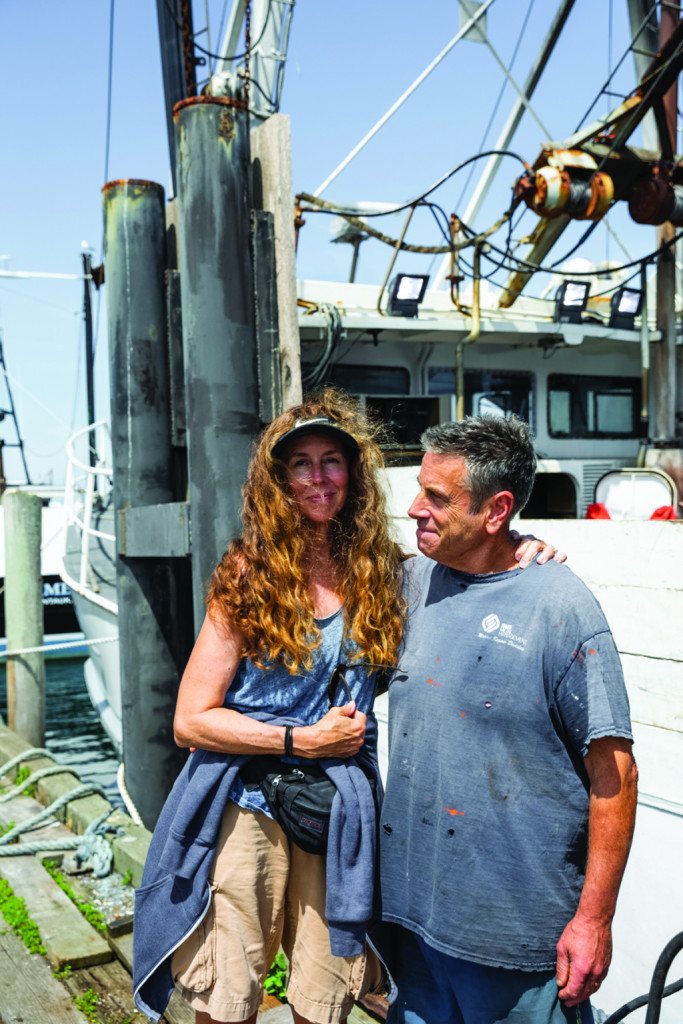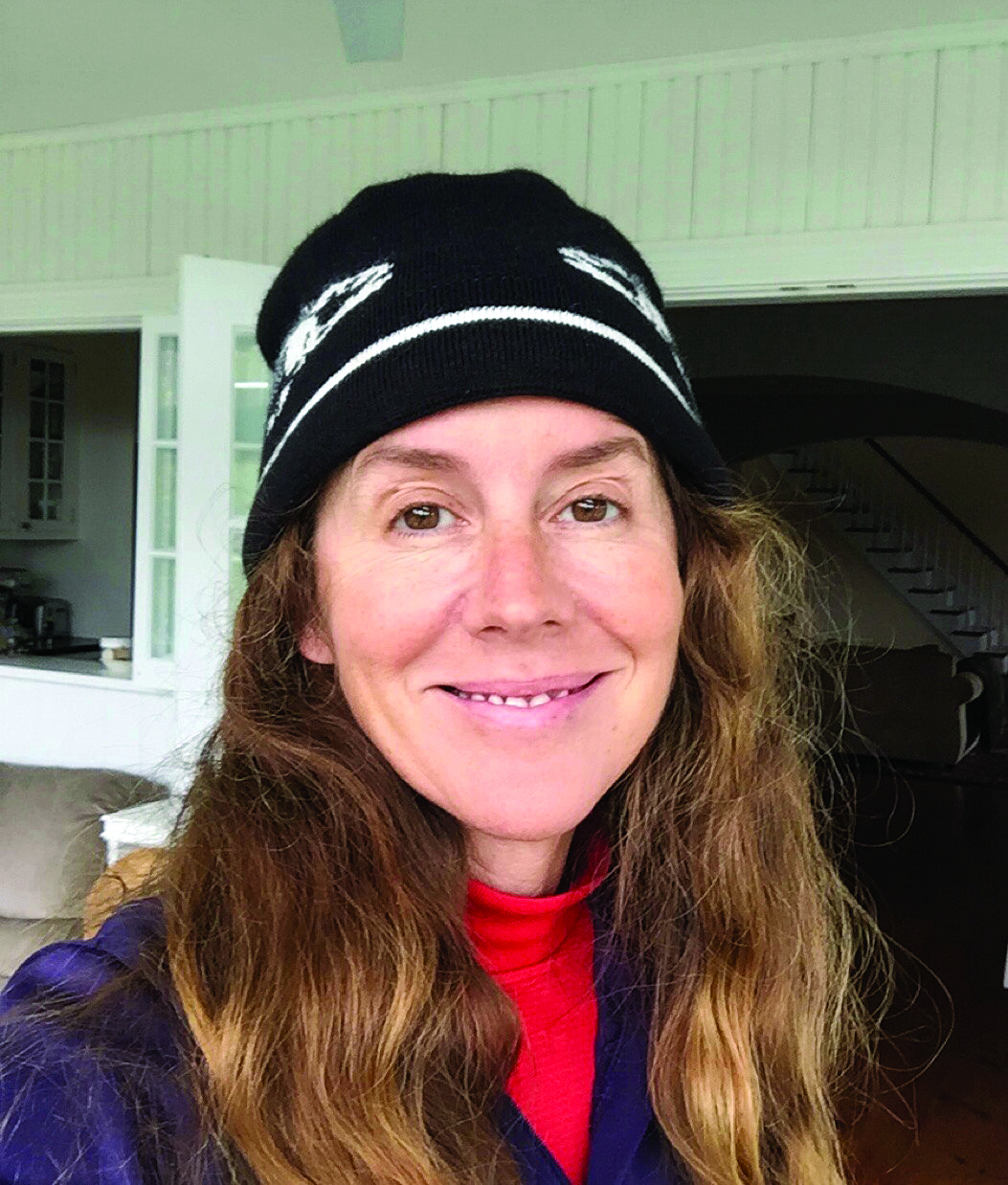"I picked up the chalk,” says Bonnie Brady. “That was the end of my life.” Twenty years later, Brady, 57, recalls the meeting that changed the course of her life and put a scrappy journalist on her path as a doggedly determined advocate for fishermen and ocean habitat.
“I had never really paid attention to the fishing thing,” Brady adds. She came to fishing through marriage after landing in Montauk, N.Y., an iconic Long Island fishing town.
Like many community fisheries advocates, she recalls that time of her life via council proceedings: “It was around 2000, Amendment 13” to the Northeast Multispecies Fishery Management Plan.
“Dave was out fishing, and he said, ‘Can you go to this meeting and find out what happens?’” Brady adds that once she got to the fishermen’s forum hosted by the Cornell Cooperative Extension, the room was awash with a range of complaints from a crowd of fishermen. She stood up, grabbed the chalk and started to ask questions. “If you were to list the top five problems, what are they? I put myself in the middle. Being a reporter, I wanted to see what the main points were. It was obvious these guys had real issues. I had never paid attention to any of that before I met Dave.”
Brady married Montauk fisherman Dave Aripotch in 1998. “He’s a trawler — fluke, scup, black sea bass, squid, whiting. He used to groundfish, but he leases his quota now,” Brady says. “He started going offshore gillnetting when he was 15. He would sneak off unbeknownst to his parents. He would take off for a couple of weeks!”

Brady was born in Yonkers, N.Y. Her parents “got married and got divorced almost immediately.” She spent her early childhood in New Jersey. “I lived with my grandmother, and my mom worked in the city. My dad was a cop in Yonkers. They ran into each other on a street corner,” she says, describing the fateful day that led her parents back to each other. They remarried and had four more children.
Brady, 13 years older than her siblings, left home to attend the University of South Carolina in Columbia, where she studied journalism and French.
“Then I moved to D.C. in ’84. I was a broadcast major, and everyone was fired,” Brady says, remembering how terrible the era was for work in her field. She cobbled together jobs in retail, bookkeeping, waiting tables, even working in New Jersey Sen. Bill Bradley’s office on Capitol Hill before heading back to New York in 1989.
This time, she went “home” to Montauk, where her parents had moved after her father retired. There she joined the volunteer fire department, became an EMT and wrote for the East Hampton Star while she waited for a Peace Corps assignment, which eventually landed her in Cameroon.
“I was a health worker at a bush post,” Brady says. “We were basically vaccinating kids. Malaria, malnutrition and childhood diseases were the biggest threats. And of course we were dealing with AIDS because in sub-Saharan African in the early 1990s it was a heterosexual disease.” She returned to Montauk and the Star in 1993.
“I was doing that during the daytime and of course waitressing at night because you make no money working for a paper.”
That’s when Brady met and married Aripotch. “We had two girls — Mairead was born in 1998; Caitlin in 1999.”
Shortly thereafter, she found herself at that first fisheries meeting.
“I made the mistake of raising my hand and picking up the chalk,” Brady laughs. “That’s when I started involving myself in the group we formed in 2000, the Long Island Commercial Fishing Association.”
Then she read a national story on the decline of fisheries and started digging around into the background of the people quoted in the story.
“She’s doing research all the time. Bonnie likes her facts,” says Meghan Lapp, fisheries liaison for Seafreeze Ltd. and general manager for Seafreeze Shoreside. “Nobody chooses this industry because it’s an easy one.”
Brady was shocked by what she discovered about the fisheries report.
“Twelve out of 13 people in that story were funded either directly or indirectly by Pew, and the other guy was a chef,” Brady says. “I thought I knew what was going on. And if not, obviously the environmental groups would tell me. Why wouldn’t they tell me the truth?” Brady says. “Science is supposed to be that hallowed hall.”
She learned the Pew Charitable Trusts held a 2002 marine fellows workshop in Bonaire, east of Aruba. The purpose was “to train the scientists in the ways of the media, the better to market their message,” according to a report by Nancy Gaines for the Gloucester Daily Times.
“It was eye opening. I had no idea. We had a complete example of collusion and advocacy that wasn’t reporting,” Brady says. “Things are not always as they appear. And it didn’t really matter what side you’re on, money buys influence and sometimes power. I thought if you were an environmentalist, you tell the truth. And that’s not always the case.”
The shift, Brady surmises, came with a drive for more funding at the university level.
“Back in the day, it was publish or perish. Now it’s bring in outside sources of money — grant money, grant funds,” Brady says.
“Bonnie’s always been on the right side of these arguments — digging up the dirt that’s buried deep within it,” says Jim Lovgren, secretary of the Fishermen’s Dock Co-op and owner of the Shadowfax in Point Pleasant, N.J.
I’m a reformed snob,” Brady jokes. “There are other kinds of intelligence. People think that because these guys are a little rough around the edges that inherently they’re stupid. What other profession is there where you have 30 to 40 years of experience, and basically you’re told your information doesn’t matter because it’s coming from you?”
Brady remembers a time when the U.S. Bureau of Fisheries (which would become NMFS) was dedicated to documenting the stories of the sea.
“People like Rachel Carson were working for NMFS and were memorializing anecdotal evidence,” Brady says.
Like Carson, Brady has found fisheries to be a passion project.
“Bonnie is extremely passionate about what she does,” says Lapp. “She puts her heart and soul into it.”
Brady’s heart and soul soon led her to offshore wind power meetings.
“The Long Island Power Authority wanted to put two 800-MW arrays of 2-MW turbines of offshore wind within state waters south of Jones Beach, right in the middle of our squid grounds. And that was my introduction,” Brady says. “The opposition at the time was mostly because people didn’t want to look at them in state waters.”
Over the years, she’s learned a lot about offshore wind and joined the board of the Responsible Offshore Development Alliance to help fishermen get a seat at the table.
“It’s the same with wind as with anything. It’s PR versus reality,” Brady says. “These things only work at 38 percent capacity of their nameplate per year. And they work even less in the summer on the East Coast when we really need, it. They lose power over time — 4 and up to 8 percent every year.”
Despite some significant questions as to the infrastructure and output of wind power arrays, Brady is more concerned about the lack of data on their lifespans, the prospects for decommissioning when they become defunct, and the cost of turning over large tracts of our ocean floor to foreign investors.

“The biggest problem that we have is there is a virtual dearth of science on the long-term effects of any of these, Brady says. “These are foreign-owned energy companies in our exclusive economic zone. In ’76 we pushed them off of our shores, the fleets, and now we’re saying come on back! Take our grounds from us! All up and down the coast, in all of our fishing grounds. What happens after 10 years when these things no longer work?”
If anyone is up to the task of holding the energy companies accountable for their projections, it’s Brady. And if anyone is up for the wild ride that is sure to come with offshore development, it’s commercial fishermen.
“The guys who are still in it now are warriors. They’re used to 15 things happening at the same time. They’re used to dealing with whatever hand they’re given,” says Brady. “They’re good at adaptation, but they need to have representation at these meetings.”
That’s where people like Brady shine.
“She is one of the most sincere advocates that I know,” says Greg DiDomenico, executive director of the Garden State Seafood Association in New Jersey. “Her grass roots abilities and commitment to her community is remarkable.”
That commitment drives Brady to master new skills to keep standing up for fishermen.
“I want to take a fisheries science math course. If you don’t understand the language, you can’t fight,” she says. “I need to know how those models work.”
And her beat goes on.







